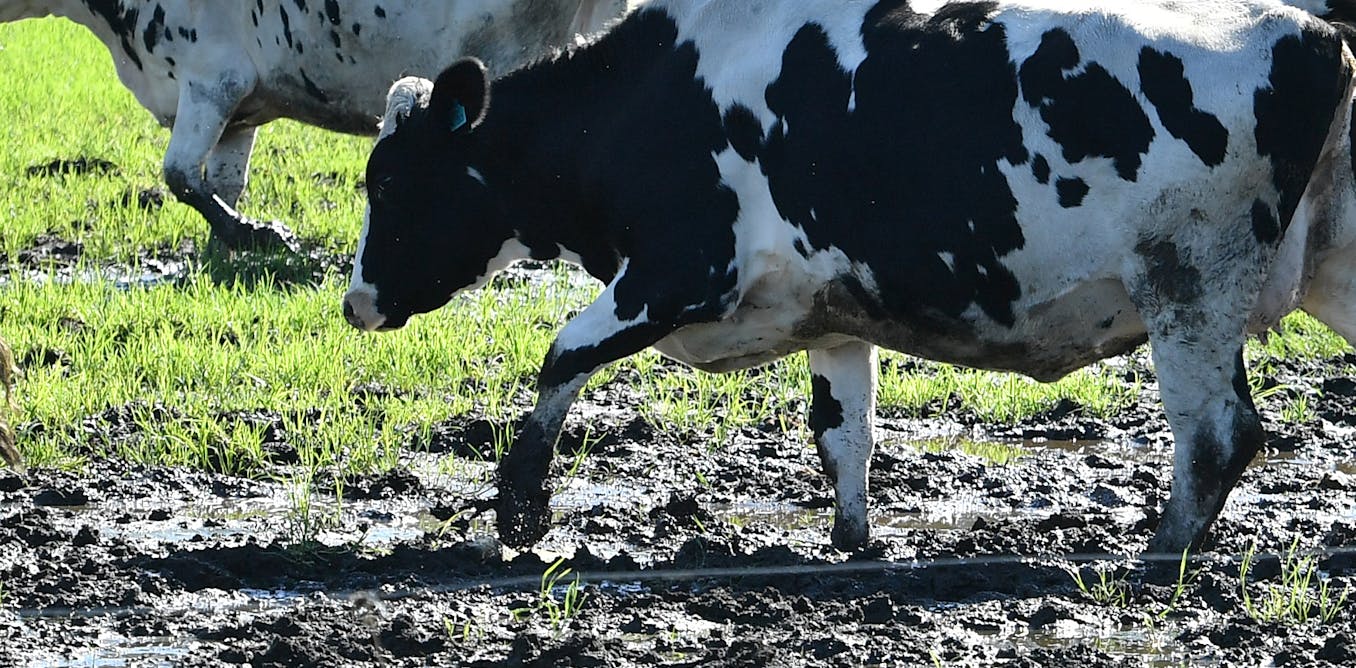Australia's Dairy Industry Faces Unprecedented Challenges Amid Climate Change and Market Shifts

Australia's dairy industry is currently navigating a significant crisis, exacerbated by a confluence of ongoing challenges. This predicament is largely driven by climate change and extreme weather events that have severely impacted farmland and animal productivity. As a result, farmers are experiencing increasing financial pressures and mental health challenges, making the situation even more urgent.
In addition to these environmental issues, consumer preferences are rapidly evolving. There is a notable shift towards dairy substitutes, with rising interest and investment in alternative dairy proteins. These developments have not only raised questions about the future of dairy farming in Australia but also prompted industry leaders to urge consumers to brace for price increases as shortages of milk, butter, and cheese loom on the horizon.
Dairy Under Pressure
As Australia's third-largest rural industry, dairy contributes over A$6 billion to the economy each year while directly employing more than 30,000 individuals. However, the sector has been under intense strain, particularly this year, with repeated bouts of extreme weather affecting key dairy-producing regions in the southern and eastern parts of the country.
In New South Wales, dairy farmers are contending with significant flooding, which has resulted in broken monthly rainfall records as of May. In Victoria, the drought and water scarcity have worsened, leaving farmers struggling to maintain their operations. Tasmania, too, is experiencing some of the driest conditions seen in over a century. These adverse conditions have forced many farmers to reduce their herd sizes in an effort to conserve feed and water supplies.
The ramifications of these challenges on agricultural productivity are profound. Traditionally, farming has hinged on the ability to predict climate conditions, allowing farmers to cultivate crops and rear livestock in harmony with the natural cycles. However, as climate change disrupts established weather patterns, both short- and long-term planning become increasingly complicated.
High Costs, Low Profits
Climate change isn't the sole challenge facing the dairy sector. Farmers are also struggling with rising operating costs and profitability issues. Dairy farms, in comparison to other agricultural sectors such as sheep or beef, require a greater capital investment in specialized machinery and equipment for milking. This financial burden adds to the already challenging landscape.
Recent announcements regarding marginal increases in farmgate milk prices have left many farmers feeling disheartened, as these raises often fail to keep pace with escalating operating costs. Furthermore, a concerning trend is emerging regarding family succession planning within the dairy sector. Many young individuals are hesitant to take on the burdens associated with dairy farming, leading to a steady decline in the total number of Australian dairy farms, which has dropped from over 6,000 in 2015 to just 4,163 by 2023.
What’s the Solution?
A pressing question remains: Is it possible to enhance the dairy industry's productivity, profitability, and sustainability? The Australian Dairy Farmers organization, which serves as the national policy and advocacy group for the sector, has been vocal about the need for government investment aimed at addressing critical issues. In the lead-up to the federal election, they called for a substantial investment of A$399 million that would focus on crucial priorities, including:
- Investment in on-farm technologies to enhance efficiencies
- Funding to secure water resources
- Upskilling programs for dairy farmers
- Support for succession planning initiatives
As the industry grapples with the challenges posed by climate change, financial pressures, and mental health concerns, there is a growing need for pathways that allow current farmers to transition. This could involve either altering farming practices—such as reducing herd sizes—or shifting away from dairy farming altogether.
Dairy Without the Cows
Innovative solutions aimed at making dairy production more sustainable and efficient are emerging but face significant competition. Techniques such as cellular agriculture, particularly through “precision fermentation,” hold promise for producing dairy products without traditional livestock. For example, Australian company Eden Brew has partnered with dairy giant Norco to develop and bring to market precision fermentation dairy proteins. Meanwhile, All G, another Australian firm, recently received approval to sell precision fermentation lactoferrin—an essential ingredient in baby formula—in China, marking another step towards animal-free dairy alternatives.
Despite the enthusiasm surrounding these new technologies, challenges related to cost and scalability in cellular agriculture remain. Nevertheless, the non-dairy milk market in Australia is rapidly expanding, now valued at over A$600 million annually. This growth reflects a global trend towards plant-based options, driven by health, environmental, and ethical factors.
Is There a Win-Win Outcome?
The prospect of a future where increased funding is allocated to large-scale production of milk through precision fermentation, while simultaneously supporting existing dairy workers, farms, and the broader rural community, is indeed a topic of discussion. Advocates for this approach envision what researchers refer to as “protein pluralism”—a market where both traditional and alternative protein sources can thrive side by side. Achieving this vision would require long-term strategic planning from both the dairy industry and government stakeholders.
It’s crucial to remember that while methods like precision fermentation promise animal-free dairy products, the full realization of their benefits is still speculative. The broader societal implications of these innovations remain to be seen.
What We Can Do Now
In light of these complexities, some experts argue that immediate action should be prioritized. This includes endorsing agroecological practices aimed at addressing inequities in food systems and empowering primary food producers. A recent study indicated that Australian dairy farmers are eager for financial and technical guidance to make informed decisions about the future of their operations.
Despite the increasing acknowledgment of the challenges facing the dairy sector, responses from both the government and the alternative dairy market have been inconsistent. A more coordinated approach is essential to assist affected farmers in adapting to new realities or diversifying their operations, with robust guidance from industry experts and government support.



























